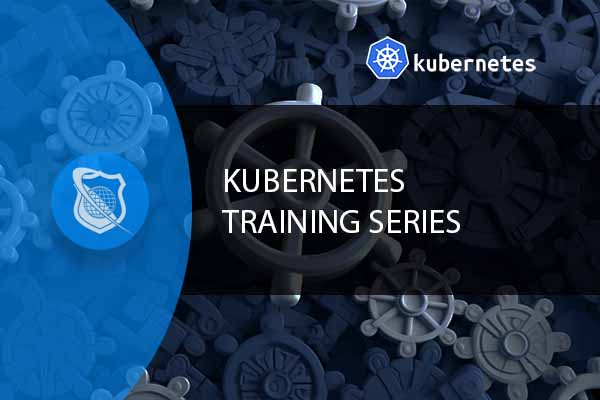The Google Cloud Platform (GCP), a robust collection of cloud services presented by Google, delivers a secure, dependable infrastructure for businesses. It allows for the development, deployment, and scalability of applications, websites, and various services. With services spanning storage, computing, networking, databases, machine learning, and more, GCP assists businesses in harnessing the power of the cloud. Given its worldwide infrastructure, superior data analytics capabilities, and extensive service offerings, it stands as a favored option for organizations aiming to revamp their IT infrastructure, fostering innovation in a scalable and budget-friendly way. In this piece, we’ll delve into the GCP architecture, examining its crucial components and features in greater depth.
Benefits of GCP Architecture
Google Cloud Platform (GCP) architecture offers several benefits that optimize network design and operations. This robust architecture enhances performance, reliability, and fault tolerance, ensuring the smooth functioning of applications and services. Here are some key advantages:
1. Network Optimization: GCP provides a highly optimized network infrastructure that enables efficient data transfer and low-latency connections. It leverages Google’s global fiber network, which is one of the largest and fastest networks worldwide. This network architecture ensures fast and reliable data transmission, reducing latency and enhancing user experience.
2. Fault Tolerance: GCP architecture incorporates fault tolerance measures to minimize the impact of potential failures. Isolated zones are used to isolate workloads, ensuring that failures in one zone do not affect other zones. This approach provides high availability and reduces the risk of downtime, enabling uninterrupted service delivery.
3. Fast Network Connectivity: GCP offers fast network connectivity between regions, enabling efficient communication and data transfer across different geographic locations. With Google’s global network backbone, users can access resources located in various regions with low latency and high bandwidth connections.
4. Protection from Global Disasters: GCP architecture is designed to protect applications and data from global disasters. By distributing data across multiple regions and maintaining redundancy, GCP ensures high availability and data integrity even in the event of natural disasters or infrastructure failures.
In summary, GCP architecture provides network optimization, fault tolerance, fast network connectivity, and protection from global disasters. These benefits contribute to the overall reliability, scalability, and performance of applications and services deployed on the Google Cloud Platform.
Google Cloud Platform Training
Set your sights on mastering Google Cloud Platform with our top-tier training program. Act now and begin your transformative journey towards becoming a certified cloud engineering expert.
Cloud Storage Solutions
Google Cloud Platform (GCP) architecture offers robust cloud storage solutions that provide organizations with scalable and secure storage options. From object storage to database services, GCP enables businesses to leverage various storage solutions to meet their specific needs. GCP’s storage services are designed to be highly available, fault-tolerant, and compliant with industry standards, ensuring the utmost data protection and accessibility. In this article, we will explore the key features and benefits of GCP’s cloud storage solutions, including Google Cloud Storage, Cloud Spanner, and Cloud Data Loss Prevention. We will also discuss how GCP integrates with other services to provide a comprehensive storage ecosystem, enabling organizations to effectively manage and store their data in the cloud.
Google Cloud Storage Options
Google Cloud Storage offers several options to meet different storage requirements and use cases. Here are the different options available:
1. Standard Storage:
– Use Case: It is ideal for frequently accessed data.
– Benefits: Offers high availability and low latency, making it suitable for serving website content, streaming videos, and storing data for analytics.
2. Nearline Storage:
– Use Case: Designed for data that may not be accessed frequently but requires quick access when needed.
– Benefits: Offers a lower storage cost compared to Standard Storage while still providing fast data retrieval.
3. Coldline Storage:
– Use Case: Perfect for long-term data archival with minimal access requirements.
– Benefits: Provides the lowest storage cost among the options and ensures durability for infrequently accessed data.
4. Archive Storage:
– Use Case: Designed for data that needs to be stored for a very long time with minimal access requirements.
– Benefits: Offers the lowest cost for long-term data retention and is suitable for compliance purposes and legal requirements.
5. Multi-Regional Storage:
– Use Case: Suitable for globally distributed applications that require low-latency access from multiple regions.
– Benefits: Provides high availability, durability, and global redundancy, ensuring fast access to data regardless of the user’s location.
6. Regional Storage:
– Use Case: Designed for applications that require high-performance storage for a specific region.
– Benefits: Offers low-latency access to data within a single region, making it ideal for latency-sensitive workloads.
Each option in Google Cloud Storage is tailored to address different storage needs, ensuring scalability, reliability, and cost-effectiveness for various use cases.
Advantages of Using GCS for Data Storage
Google Cloud Storage (GCS) offers numerous advantages for data storage in the context of Google Cloud Platform (GCP) architecture. Here are some key benefits:
1. Scalability: GCS provides virtually unlimited scalability, allowing businesses to store and manage vast amounts of data. It can easily handle both small and large-scale data storage requirements, accommodating the needs of growing businesses.
2. Durability and Reliability: GCS ensures high durability and reliability for stored data. It replicates data across multiple regions and zones, offering redundancy and protection against data loss. In the event of hardware failures or infrastructure issues, GCS automatically handles data replication, ensuring data integrity and availability.
3. Flexibility: GCS offers a range of storage classes to cater to different data access patterns and cost requirements. From frequently accessed data to long-term archival, GCS provides storage classes like Standard, Nearline, Coldline, and Archive, allowing businesses to optimize storage costs without compromising data accessibility.
4. Global Accessibility: GCS enables global accessibility to stored data, providing low-latency access from multiple regions. This makes it suitable for globally distributed applications or businesses with a global user base. With GCS, data can be easily accessed and served to users regardless of their geographic location.
5. Security: GCS ensures the security of stored data through multiple layers of encryption. It provides options for encryption at rest and in transit, protecting data from unauthorized access. Additionally, GCS offers fine-grained access controls, allowing businesses to define and manage access permissions at various levels.
In summary, GCS provides scalability, durability, flexibility, global accessibility, and robust security for data storage in the GCP architecture. By leveraging GCS, businesses can efficiently manage their data storage needs while benefiting from the advantages of fault tolerance, fast network connectivity, and on-demand resource distribution across multiple regions and zones.
Google Cloud Platform Training
Set your sights on mastering Google Cloud Platform with our top-tier training program. Act now and begin your transformative journey towards becoming a certified cloud engineering expert.
Integrating with Other Compute Services
Integrating with Other Compute Services in the Google Cloud Platform Architecture
In the Google Cloud Platform (GCP) architecture, integrating with other compute services plays a crucial role in enhancing application deployment and management. With a range of compute services available, businesses can leverage the power of these services to optimize their application environments and achieve efficient resource management. Here’s a look at how different compute services can be used together to facilitate seamless integration and deliver enhanced results:
1. Google Kubernetes Engine (GKE): GKE allows businesses to deploy, manage, and scale containerized applications using Kubernetes. By integrating GKE with other compute services, developers can benefit from a scalable and reliable platform for application deployment. GKE helps streamline application development and provides automated scaling, load balancing, and self-healing capabilities, ensuring optimal performance and reducing downtime.
2. Compute Engine: Compute Engine offers virtual machines (VMs) that enable businesses to run their applications on Google’s infrastructure. By integrating Compute Engine with other compute services, businesses can achieve a flexible and scalable environment for running various workloads. Compute Engine provides customizable VM instances with options for different CPU and memory configurations, allowing businesses to meet the specific requirements of their applications.
3. App Engine: App Engine is a platform-as-a-service (PaaS) offering that simplifies application deployment and management. By integrating App Engine with other compute services, businesses can leverage its auto-scaling and traffic-splitting capabilities to ensure optimal performance. App Engine allows developers to focus on application code without worrying about infrastructure management, making it an ideal choice for building and deploying scalable web applications.
Integrating these compute services within the GCP architecture offers several advantages. Businesses can:
– Achieve efficient resource utilization and scalability by leveraging the auto-scaling capabilities of GKE and App Engine.
– Benefit from the flexibility and control provided by Compute Engine, allowing them to customize VM instances to meet specific application requirements.
– Improve application deployment and management processes by utilizing the self-healing capabilities of GKE and the streamlined deployment process of App Engine.
– Enhance fault tolerance and high availability by leveraging the load balancing capabilities of GKE and App Engine, ensuring optimal user experience even during peak traffic periods.
In conclusion, integrating with other compute services in the Google Cloud Platform architecture offers numerous benefits for application deployment and management. By combining the power of Google Kubernetes Engine, Compute Engine, and App Engine, businesses can optimize resource utilization, achieve scalability, and simplify the deployment process, ultimately enhancing their overall application performance.
Application Deployment and Management
Application Deployment and Management in Google Cloud Platform Architecture
In the dynamic world of cloud computing, application deployment and management are crucial elements for businesses to maximize the benefits offered by the Google Cloud Platform (GCP) architecture. With a wide array of compute services available, GCP enables businesses to streamline their application deployment processes, achieve efficient resource management, and enhance user experience. This article explores the various aspects of application deployment and management in GCP, highlighting the key compute services that contribute to seamless integration and optimal performance. By leveraging these services, businesses can ensure their applications are deployed with ease, managed effectively, and deliver exceptional results.
Google App Engine for Web Applications
Google App Engine is a powerful platform provided by Google Cloud Platform for building and deploying web applications. It enables users to develop and deploy scalable applications without the need to worry about infrastructure management. Here are some key features and benefits of Google App Engine for web applications:
1. Scalability: With App Engine, applications can automatically scale based on traffic demands. This ensures that your application can handle increased loads without any manual intervention. It saves developers from the hassle of managing servers and allows them to focus on building and improving their applications.
2. Infrastructure Management: App Engine abstracts away the underlying infrastructure and provides a fully managed environment. Developers can easily deploy their applications without worrying about server configurations or maintenance. The platform takes care of tasks like resource allocation, load balancing, and automatic scaling.
3. Built-in Security: Google App Engine offers robust security features for web applications. It provides built-in security mechanisms to protect against common vulnerabilities. Additionally, Google Cloud Platform’s security infrastructure ensures data protection, encryption, and compliance with industry standards.
4. Multiple Programming Languages: App Engine supports various programming languages, including Java, Python, PHP, Node.js, and Go. This allows developers to choose the language they are most comfortable with and leverage their existing skills and knowledge.
In conclusion, Google App Engine is an excellent choice for developing and deploying web applications. Its scalability, managed infrastructure, built-in security, and support for multiple programming languages make it a preferred platform for developers. With App Engine, developers can focus on creating innovative applications without the complexities of infrastructure management.
Deploying Applications on Compute Engines
Deploying applications on Google Compute Engines involves several steps to ensure a smooth and efficient process. Here is a step-by-step guide:
1. Prepare the application: Before deploying the application, it’s crucial to ensure that it is properly developed, tested, and ready for deployment. This includes validating the code, checking for any dependencies, and optimizing performance.
2. Choose the right VM: Select the appropriate Compute Engine VM based on the application’s requirements. Consider factors such as CPU, memory, storage, and network performance. Google Cloud Platform provides a variety of VM options to cater to different workloads.
3. Configure the VM instance: Once the VM is chosen, configure it with the desired operating system and any required software. Compute Engine allows the flexibility to choose from a range of operating systems, including popular choices like Debian, Ubuntu, and CentOS.
4. Pull images from existing infrastructure: If you have pre-built images in your existing infrastructure, you can easily migrate them to Compute Engine. Use tools like Google Cloud’s VM Migration Service to facilitate the transfer of images effortlessly. This ensures a seamless transition and minimizes the need for time-consuming rebuilds.
5. Customize the VM: For specific hardware requirements, create a custom VM and manually configure the hardware specifications. Compute Engine allows adding custom GPUs, specialized processors, and other hardware components as per the application’s needs.
6. Deploy the application: Once the VM is ready, deploy the application using standard deployment methodologies. This may involve uploading the application code and any required dependencies to the VM, configuring the necessary settings, and launching the application.
7. Scaling and load balancing: If the application demands scalability and high availability, implement scaling and load balancing mechanisms. Compute Engine provides auto-scaling capabilities that allow the application to handle increased traffic and adjust resources accordingly.
8. Monitor and optimize performance: Continuously monitor the application’s performance using tools like Google Cloud Monitoring. Analyze resource utilization, identify bottlenecks, and make necessary optimizations to enhance the application’s performance and efficiency.
Creating a “golden” image:
Creating a “golden” image involves installing a common set of tools and configurations into an image and sharing it with the development team. This strategy streamlines the application deployment process and ensures consistency across the team. Here is how it can be done:
1. Set up a base image: Start with a base image provided by Google Cloud or create a custom image with the desired specifications.
2. Install tools and dependencies: Install commonly used development tools, libraries, and dependencies that are required for most applications within your organization. This could include programming languages, version control systems, build tools, and debugging utilities.
3. Customize configurations: Configure the image with predefined settings, such as network configurations, security policies, logging systems, and monitoring agents. This ensures that every instance created from the golden image has consistent configurations.
4. Package the image: Once the image is prepared, package it as a reusable resource that can be shared with the development team. Upload it to the Google Cloud Platform’s image repository or leverage tools like Google Cloud Build to automate the packaging process.
5. Share and update the image: Make the image accessible to the development team so they can quickly provision instances with preconfigured environments. Regularly update the image to include new tools, security patches, or performance enhancements.
By following these steps and utilizing the flexibility of Compute Engines, deploying applications becomes a seamless process. Additionally, creating a “golden” image improves development efficiency and ensures consistency across the team, ultimately enabling faster and more reliable application deployment.
Google Cloud Platform Training
Set your sights on mastering Google Cloud Platform with our top-tier training program. Act now and begin your transformative journey towards becoming a certified cloud engineering expert.
Automated Scaling and Load Balancing with Kubernetes Engine
Automated Scaling and Load Balancing with Kubernetes Engine in Google Cloud Platform
Automated scaling and load balancing are critical aspects of managing applications in a cloud environment. These processes ensure that resources are efficiently utilized and that the application remains responsive, even during periods of high traffic or demand. Google Cloud Platform offers a powerful solution for automated scaling and load balancing through its Kubernetes Engine.
Kubernetes Engine, also known as GKE, is a managed environment for deploying, managing, and scaling containerized applications using the open-source Kubernetes system. It simplifies the process of managing containerized workloads and provides a robust infrastructure for automating scaling and load balancing.
Here’s how Kubernetes Engine enables automated scaling and load balancing in the Google Cloud Platform:
1. Efficient Resource Utilization: Kubernetes Engine dynamically adjusts the allocation of resources based on the demand of the application. It monitors the resource utilization and optimizes the allocation of CPU and memory resources across the cluster, ensuring that resources are efficiently utilized. This automatic optimization helps to minimize costs and improve performance by preventing overprovisioning or underutilization of resources.
2. Horizontal Pod Autoscaling: Kubernetes Engine allows for the automatic scaling of application pods based on predefined metrics such as CPU utilization, memory usage, or custom metrics. Horizontal Pod Autoscaling (HPA) automatically adjusts the number of running pods to match the current demand, ensuring that the application can handle increased traffic without performance degradation. This feature enables efficient utilization of resources and guarantees that the application remains responsive even during peak loads.
3. Cluster Autoscaling: In addition to horizontal pod autoscaling, Kubernetes Engine also supports cluster autoscaling. Cluster autoscaling dynamically adjusts the size of the cluster based on the overall demand of the application. It automatically adds or removes worker nodes to match the workload requirements, ensuring that there are enough resources available to handle the load. This feature eliminates the need for manual intervention in scaling the cluster and helps to optimize resource allocation.
4. Load Balancing: Load balancing is an essential component of ensuring availability and distributing workloads evenly across an application. Kubernetes Engine provides a built-in load balancing feature that distributes incoming traffic to the deployed pods in a round-robin manner. The load balancer continuously monitors the health of the pods and redirects traffic to healthy pods, ensuring that the application remains available and responsive even if some pods become unavailable.
5. Integration with Google Cloud Services: Kubernetes Engine seamlessly integrates with other Google Cloud services, such as Cloud Load Balancing and Cloud CDN, to further enhance load balancing capabilities and improve application performance. Cloud Load Balancing enables the distribution of traffic across multiple regions, while Cloud CDN caches and delivers content from the nearest edge location, reducing latency and improving user experience.
In conclusion, Kubernetes Engine in Google Cloud Platform provides a powerful solution for automated scaling and load balancing. It allows for efficient resource utilization, automatic scaling of application pods, dynamic cluster scaling, and seamless integration with other Google Cloud services. By leveraging Kubernetes Engine, organizations can ensure optimal performance, high availability, and efficient resource allocation for their applications in a cloud environment.
Kubernetes Training Series
Unleash your potential with our comprehensive Kubernetes Training Series. Master the art of automating, deploying, and scaling containerized applications. Our course covers everything from Kubernetes Administrator and Application Developer certifications to career insights. Take a step towards an exciting engineering career today!
Command-Line Tools for Managing Applications
Command-line tools are essential for managing applications in the Google Cloud Platform. These tools provide developers with a convenient and efficient way to perform various deployment and maintenance tasks. Here are some of the command-line tools available in Google Cloud Platform and how they can be used:
1. Cloud SDK: Cloud SDK is a set of tools that allows developers to access and manage resources in Google Cloud Platform. It provides command-line interface (CLI) tools for deploying, monitoring, and managing applications. With Cloud SDK, developers can easily interact with various Google Cloud services, such as Google Compute Engine and Google Cloud Storage, through the command line.
2. Cloud Code: Cloud Code is an integrated development environment (IDE) plugin for popular IDEs, such as Visual Studio Code and IntelliJ. It enables developers to build, test, and deploy applications directly from their IDE. Cloud Code includes features like local development and debugging, simplified deployment to Kubernetes clusters, and integration with other Google Cloud services.
3. CloudBuild: CloudBuild is a fully managed continuous integration and delivery (CI/CD) platform provided by Google Cloud Platform. It allows developers to automate the building, testing, and deployment of applications. With CloudBuild, developers can define build pipelines using either YAML or a graphical user interface (GUI) and trigger builds based on events or schedules.
4. Cloud Scheduler: Cloud Scheduler is a fully managed cron job service that allows developers to schedule and automate recurring tasks. It provides a reliable and scalable way to trigger functions or send requests to HTTP endpoints at predefined intervals. Cloud Scheduler integrates with other Google Cloud services, such as Cloud Pub/Sub and Cloud Functions, to enable seamless automation of tasks.
5. Cloud Tasks: Cloud Tasks is a fully managed task orchestration service that allows developers to create and manage tasks. It provides a scalable and reliable way to distribute and execute tasks asynchronously. With Cloud Tasks, developers can decouple different components of their application and ensure reliable message delivery.
In summary, command-line tools like Cloud SDK, Cloud Code, CloudBuild, Cloud Scheduler, and Cloud Tasks are instrumental in managing applications in Google Cloud Platform. These tools streamline the deployment and maintenance processes, enabling developers to build and manage robust applications more efficiently.
Networking Infrastructure and Security
Networking infrastructure and security are vital aspects of any cloud platform architecture. In the case of Google Cloud Platform (GCP), the network infrastructure is designed to provide secure connectivity and reliable communication between various components and services. This article explores the key elements of GCP’s networking infrastructure and the security measures in place to protect data and applications.
1. Virtual Private Cloud (VPC):
A Virtual Private Cloud (VPC) is a private network environment within GCP that enables users to define and manage their own virtual network settings. VPC allows for flexible segmentation of resources, enabling different applications or teams to have their own isolated networks. With VPC, users have granular control over IP address ranges, subnets, and firewall rules, ensuring secure communication between instances and services.
2. Firewall Rules:
GCP provides a powerful firewall feature that allows users to define and control inbound and outbound traffic flow to their virtual machine instances. Firewall rules can be set based on IP addresses, ports, and protocols, providing fine-grained access control. This helps in securing applications and protecting them from unauthorized access or malicious threats.
3. Cloud Load Balancing:
Google Cloud Load Balancing ensures high availability and scalability of applications by distributing incoming traffic across multiple instances. It intelligently routes traffic to the nearest instance, optimizes network performance, and automatically scales resources based on demand. Cloud Load Balancing protects applications from service disruptions and helps maintain a smooth user experience.
4. Virtual Private Network (VPN):
GCP offers secure site-to-site connectivity through Virtual Private Network (VPN) services. VPN establishes an encrypted connection between a user’s on-premises network and GCP’s VPC, allowing secure communication over the internet. VPN enables organizations to extend their existing network infrastructure into the cloud while maintaining data privacy and security.
5. Cloud CDN:
Google Cloud CDN (Content Delivery Network) accelerates the delivery of web content to users across the globe. By caching content at Google’s edge locations, Cloud CDN reduces latency and improves the performance of web applications. Additionally, it provides a layer of security by protecting against distributed denial-of-service (DDoS) attacks, ensuring the availability and reliability of services.
6. Identity and Access Management (IAM):
IAM in GCP enables administrators to control user access and permissions to resources. With IAM, organizations can establish a centralized system for managing and granting fine-grained access controls. This helps enforce the principle of least privilege, ensuring that only authorized users can access and modify sensitive data and resources.
7. Data Encryption:
GCP provides various encryption options to protect data at rest and in transit. Data at rest is encrypted using Google-managed encryption keys, while data in transit is protected by default using SSL/TLS protocols. Additional encryption options, such as customer-supplied encryption keys (CSEK) and Cloud Key Management Service (KMS), offer extra layers of security and control over data encryption.
Key Takeaway:
Google Cloud Platform offers robust networking infrastructure and security features to ensure the protection and smooth operation of applications and data. With features like VPC, firewall rules, load balancing, VPN, CDN, IAM, and data encryption, users can build and deploy their applications with confidence while maintaining the highest levels of security and reliability. By leveraging GCP’s networking infrastructure and security measures, organizations can architect cloud environments that meet their specific requirements and enhance the overall performance and resilience of their applications.
Configuring Networks in the Public Cloud Environment
In a public cloud environment, the configuration of networks is a critical aspect that needs to be carefully planned and implemented to ensure secure and reliable connectivity. This becomes even more important in hybrid and multi-cloud deployments where private computing environments need to be securely connected to Google Cloud.
A hybrid cloud setup involves the combination of on-premises infrastructure with public cloud services, while a multi-cloud deployment uses multiple cloud providers simultaneously. In both scenarios, network configuration plays a vital role in securely connecting different environments and enabling seamless data transfer and communication.
To achieve a secure and reliable connection between private computing environments and the Google Cloud Platform (GCP), several network topologies can be used as blueprints. These topologies define how resources and services are interconnected within the cloud infrastructure.
One common network topology is the virtual private network (VPN) connection. VPN establishes an encrypted connection between a user’s on-premises network and the GCP’s Virtual Private Cloud (VPC). This allows for secure communication over the internet, enabling organizations to extend their existing network infrastructure into the cloud while maintaining data privacy and security.
Another commonly used network configuration is the use of dedicated interconnect or direct peering. These options provide private and dedicated connections between on-premises networks and GCP’s infrastructure, ensuring high network performance and low latency. This is particularly useful for applications that require fast and reliable data transfer, such as data-intensive workloads or real-time analytics.
Additionally, organizations can leverage Google Cloud’s partner ecosystem to configure network connectivity. GCP’s partner interconnect program allows organizations to connect to GCP through their preferred network service provider, providing more flexibility and options in network configuration.
Overall, configuring networks in a public cloud environment is a complex task but is crucial for the success of hybrid and multi-cloud deployments. It requires careful planning and consideration of security, performance, and reliability. By choosing the right network topology and leveraging Google Cloud’s network services and partner ecosystem, organizations can securely and reliably connect their private computing environments to the Google Cloud Platform.
Setting Up Firewall Rules to Secure Cloud Applications
One of the key aspects of securing cloud applications is implementing robust firewall rules. Firewall rules act as a protective barrier, controlling the incoming and outgoing network traffic to and from your cloud resources. Google Cloud Platform (GCP) offers a range of built-in security features that can be leveraged to set up firewall rules and ensure the safety of your cloud applications.
To begin the process of setting up firewall rules, you can utilize GCP’s Firewall Rules service. This service allows you to define and manage access control policies for your virtual machine instances. By specifying source and destination IP addresses, protocols, and ports, you can create highly specific rules to allow or deny traffic to your cloud resources.
GCP’s Firewall Rules service provides both a default-allow and default-deny approach. With default-allow, all incoming and outgoing traffic is allowed by default unless specifically denied by a firewall rule. On the other hand, default-deny blocks all incoming and outgoing traffic unless explicitly allowed by a firewall rule. It is recommended to follow the default-deny approach to minimize potential security breaches.
Another essential security feature offered by GCP is Cloud Identity and Access Management (IAM). IAM allows you to control access to GCP resources and data by managing permissions and roles. With IAM, you can assign users to specific roles, granting them specific privileges based on their responsibilities and requirements. This ensures that only authorized individuals have access to sensitive data and resources.
IAM also provides the capability to set up fine-grained access controls through the use of custom roles. Custom roles allow you to define and assign permissions that align with your organization’s specific security requirements. By using IAM, you can implement the principle of least privilege, ensuring that users have access only to what they need to perform their tasks.
In addition to firewall rules and IAM, GCP offers two vital security scanning and monitoring tools: Cloud Security Scanner and Cloud Security Command Center.
Cloud Security Scanner is a web application scanner that identifies vulnerabilities and security risks within your applications. It scans your application’s URLs for common security flaws and vulnerabilities such as cross-site scripting (XSS) and mixed content. By regularly scanning your applications with Cloud Security Scanner, you can proactively identify and address potential security issues.
Cloud Security Command Center provides centralized visibility into the security posture of your GCP environment. It helps you monitor and detect security threats and risks by aggregating and analyzing security telemetry data from various sources, including infrastructure configuration, network traffic, and user activity. With this comprehensive view, you can identify and respond to security incidents quickly, enhancing the overall security of your cloud applications.
In conclusion, securing cloud applications is a paramount concern for organizations leveraging Google Cloud Platform. By setting up firewall rules using GCP’s built-in security features, such as Firewall Rules, IAM, Cloud Security Scanner, and Cloud Security Command Center, you can enhance the security posture of your cloud applications and mitigate potential security risks. Implementing these measures ensures that your data and resources in the cloud remain protected from unauthorized access and potential threats.
Authentication and Authorization in the Cloud Environment
In the cloud environment, authentication and authorization play a crucial role in ensuring the security of resources and data. Google Cloud Platform (GCP) provides robust security features, such as Cloud Identity and Access Management (IAM), which help control access to resources and ensure the confidentiality of data.
Authentication is the process of verifying the identity of users or systems attempting to access cloud resources. GCP offers various authentication methods, including multi-factor authentication (MFA) and OAuth, to ensure strong user authentication. By implementing proper authentication mechanisms, organizations can ensure that only authorized users have access to sensitive data and resources.
Authorization, on the other hand, determines what actions a user or system can perform on a specific resource. GCP’s IAM allows organizations to manage permissions and roles effectively. With IAM, organizations can assign users specific roles, granting them granular access privileges based on their responsibilities and requirements. This ensures that users only have access to the resources and data necessary to perform their tasks, improving security and minimizing the risk of unauthorized access.
Implementing proper authentication and authorization in GCP brings several benefits. Firstly, it ensures the confidentiality of data by controlling access to sensitive information. Only authorized individuals or systems can access and manipulate the data, reducing the risk of data breaches.
Additionally, authentication and authorization in the cloud environment help organizations meet regulatory compliance requirements. By implementing strong authentication mechanisms and controlling access through fine-grained authorization, organizations can demonstrate compliance with industry standards and regulations.
Furthermore, proper authentication and authorization help prevent unauthorized access to cloud resources. By ensuring that only authenticated and authorized users can access resources, organizations can mitigate the risk of malicious attacks and unauthorized use of resources.
In conclusion, authentication and authorization are essential in the cloud environment to ensure the security of resources and data. Google Cloud Platform provides robust security features, such as Cloud IAM, that enable organizations to control access and ensure data confidentiality. Implementing proper authentication and authorization mechanisms brings multiple benefits, including improved security, regulatory compliance, and prevention of unauthorized access. By leveraging these security features, organizations can strengthen their cloud architecture and protect their valuable assets.
Google Cloud Platform Architecture : Your Questions Answered
Google Cloud Platform Architecture: Your Questions Answered
Google Cloud Platform Architecture refers to the structured framework that combines a suite of cloud services and resources such as computing engines, storage solutions, and networking systems offered by Google Cloud. It supports cloud computing by providing scalable, secure, and highly available infrastructure that allows businesses and developers to deploy applications, manage data, and integrate analytics seamlessly across global data centers.
How does the scalability of Google Cloud Platform Architecture benefit my business?
The scalability of Google Cloud Platform Architecture allows businesses to dynamically adjust their resource allocation based on their current needs, without the need for upfront investment in physical hardware. This means you can easily scale up or down your computing resources in response to demand fluctuations, ensuring cost-efficiency and the ability to handle peak loads without compromising performance.
Can you explain the security features of Google Cloud Platform Architecture?
Google Cloud Platform Architecture incorporates robust security features designed to protect your data and applications. These include advanced network security protocols, data encryption at rest and in transit, identity and access management (IAM), and automated threat detection and response mechanisms. This comprehensive security framework ensures that your cloud environment is safeguarded against unauthorized access and potential cyber threats.
How does Google Cloud Platform Architecture facilitate data management and analytics?
Google Cloud Platform Architecture offers a wide range of services specifically designed for data management and analytics, including BigQuery for large-scale data analysis, Cloud SQL for managed database services, and Cloud Storage for secure and scalable storage solutions. These services enable businesses to collect, store, manage, and analyze vast amounts of data efficiently, providing valuable insights that can drive decision-making and innovation.
What types of applications can be developed and deployed using Google Cloud Platform Architecture?
Google Cloud Platform Architecture is versatile and supports a wide range of applications, from simple websites to complex machine learning models and large-scale enterprise applications. With its comprehensive suite of tools and services, developers can build, deploy, and manage applications across various industries, including finance, healthcare, retail, and more, leveraging cloud-native technologies to enhance performance and user experience.












